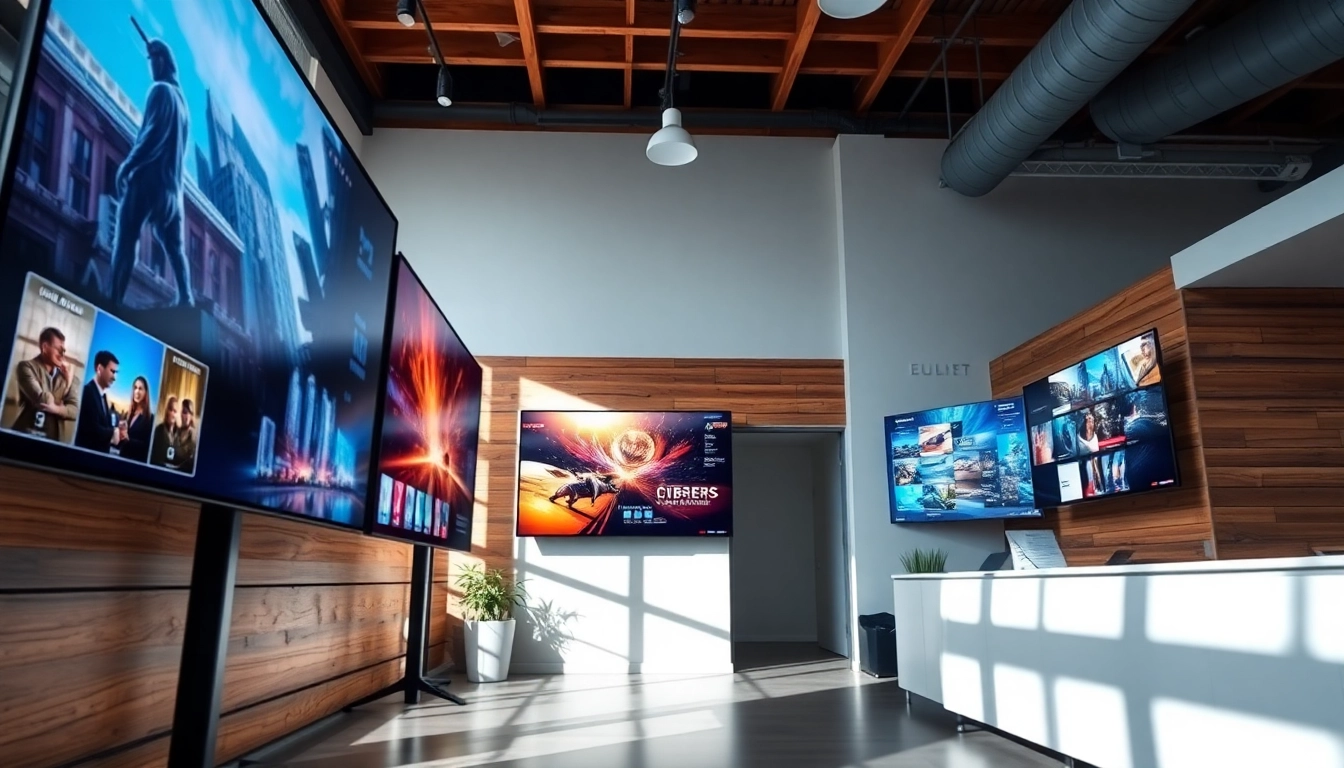
In today’s fast-paced digital landscape, businesses and organizations constantly look for innovative ways to communicate their messages effectively. One of the most efficient solutions is the ability to Schedule content on smart TV, a feature that allows brands to manage displays effortlessly while maximizing audience engagement. By leveraging smart TV technology, businesses can streamline their communication strategies, save time, and boost the overall impact of their visual messaging.
Enhancing Communication Efficiency
The ability to schedule content on smart TV transforms how businesses share information with their audiences. Whether it is a retail store displaying promotions, a corporate office presenting updates, or a restaurant highlighting menu specials, this feature ensures that content is delivered at the right time, every time. By automating the process, organizations can focus on creating compelling messages rather than constantly updating screens manually.
With the option to schedule content on smart TV, businesses can plan campaigns in advance, ensuring that their messaging aligns with specific events, holidays, or promotional periods. This level of planning allows for greater strategic control over marketing initiatives and ensures consistency in communication across all displays.
Boosting Customer Engagement
Engaging customers requires timely and relevant content, and the ability to schedule content on smart TV plays a critical role in achieving this goal. By displaying messages at optimal times, businesses can capture attention when it matters most. For instance, a retail store can schedule promotions during peak shopping hours, while a corporate office can display important announcements during employee arrival times.
The dynamic nature of schedule content on smart TV ensures that audiences are presented with fresh and engaging visuals, keeping them interested and encouraging interaction. Regularly updated content helps maintain attention, reducing the risk of audience fatigue and increasing the likelihood that messages are absorbed and acted upon.
Simplifying Operations
One of the most significant advantages of the ability to schedule content on smart TV is operational simplicity. Without the need for manual updates, staff can allocate their time to more strategic tasks, reducing workload and minimizing errors. Automation allows for seamless content rotation, ensuring that the right message appears at the right time without constant supervision.
By implementing a system to schedule content on smart TV, businesses can standardize communication practices across multiple locations or screens. This consistency helps maintain brand integrity, ensures that key messages are consistently delivered, and eliminates discrepancies that can occur when updating displays manually.
Optimizing Marketing Campaigns
Marketing effectiveness is greatly enhanced when businesses can schedule content on smart TV. With precise control over timing, companies can target their audience more effectively and align content with promotional campaigns. Seasonal offers, special events, and time-sensitive announcements can all be programmed in advance, ensuring maximum visibility and impact.
The ability to schedule content on smart TV also allows for experimentation and refinement. Businesses can track engagement, assess which messages resonate most, and adjust their content schedule accordingly. This data-driven approach ensures that marketing efforts are continuously optimized, delivering better results with each campaign.
Elevating Brand Presence
Consistent, well-timed content enhances brand perception, and the ability to schedule content on smart TV is instrumental in achieving this. By planning and automating display content, businesses ensure that their visual identity remains strong and cohesive. From the layout and design to the messaging and timing, every aspect of a scheduled display contributes to reinforcing the brand’s presence.
Organizations that regularly schedule content on smart TV benefit from a polished and professional image. The automated rotation of engaging visuals portrays a technologically advanced and organized brand, which helps build credibility and trust among customers, clients, and employees alike.
Streamlining Content Management
Managing multiple screens or locations can be challenging, but the ability to schedule content on smart TV simplifies this process. Centralized control allows businesses to upload, organize, and schedule content from a single interface. This streamlined approach reduces complexity, ensures consistency, and enables quick updates whenever necessary.
The efficiency gained from schedule content on smart TV frees up resources that would otherwise be spent manually updating each display. Staff can focus on content creation, strategic planning, or customer engagement, improving overall productivity and maximizing the impact of digital signage initiatives.
Integrating Multimedia and Interactive Features
Modern smart TVs support a variety of content formats, including video, images, animations, and interactive elements. The ability to schedule content on smart TV allows businesses to leverage these multimedia features fully. For example, a restaurant can schedule promotional videos of new menu items during lunch hours, while interactive maps or directories can be displayed in office lobbies during visitor arrival times.
By using the capability to schedule content on smart TV, organizations can create rich, engaging experiences that captivate audiences. This versatility makes it possible to combine marketing, informational, and entertainment content seamlessly, enhancing the overall impact of displays.
Supporting Growth and Flexibility
As businesses expand, the need to maintain effective communication across multiple locations becomes critical. The ability to schedule content on smart TV ensures that messaging remains consistent and professional across all screens, regardless of the number of displays or geographic locations. Centralized scheduling and automation allow businesses to grow without sacrificing quality or efficiency.
Additionally, the flexibility provided by schedule content on smart TV enables businesses to respond quickly to market trends, special events, or last-minute changes. This agility ensures that content remains relevant, timely, and impactful, keeping audiences engaged and informed at all times.
Conclusion
The ability to schedule content on smart TV is a transformative tool for businesses and organizations seeking to improve efficiency, engagement, and brand impact. By automating display updates, streamlining content management, and optimizing timing, businesses can deliver messages effectively while saving valuable time and resources.
From enhancing customer experiences to strengthening brand presence, the capability to schedule content on smart TV ensures that messaging is always timely, consistent, and engaging. Its versatility, ease of use, and scalability make it an essential component of modern digital communication strategies, empowering businesses to maximize the potential of smart TV technology in a cost-effective and impactful way.





